How To: Cook in the Great Outdoors
This post may contain affiliate links.
A Guide to Low Impact Cooking in the Backcountry
When entering into the backcountry, it’s important to remember that the natural ecology of the environment is working in perfect harmony. The water, soil, vegetation, and wildlife are all working together to produce the various melodies that make up a larger symphony. When you go out into the wilderness for enjoyment, you go to listen to the music, not to add to it. Here’s how to cook and clean in the backcountry without ruining the show.
Campfires Are For Noobs
The greatest way you can reduce your overall ecological liability when visiting the backcountry is to forgo the campfire. A sudden gust of wind can carry an ember for miles and be the spark that starts a forest fire. You do not want to be that guy. There are dozens of compact and lightweight backpacking stoves on the market designed specifically for use in the backcountry. When we’re out backpacking, we use a MSR Pocket Rocket that screws directly onto a standard camping fuel canister. The design couldn’t be simpler.
Don’t Eat Where You Sleep
This is particularly important in Bear Country but should be practiced wherever. Animals, large and small, will be drawn to the smell of your food whether you like it or not. So unless you want some hungry nocturnal companions sniffing around while you sleep, it is strongly encouraged that you cook and store your food (ideally in a bear barrel) far away from where you make camp.
It’s important that wild animals don’t start to associate humans with food. Using a bear barrel (or a metal bear locker if provided) is key to preventing them from accessing it; physically distancing yourself from the smell helps dissociate you from the food. Some people suggest cooking 100 yards away from camp, others say 200 yards. We have no intentions of meeting any creatures of the night, so we always round up.
Less Mess is Best
Find creative ways to reduce the number of pots and pans you need. The fewer dishes you need to clean, the smaller the impact caused by your eventual waste water. Besides, everybody hates doing dishes, so this is really a win-win for you and the environment.
We’re strong supporters of the one pot meal. There are lots of recipes that call for you to combine all the ingredients in a single pot and boil. When the meal is ready, the pot becomes your bowl. And when the meal is done, the pot becomes your sink. Bing, bang, boom.
Join the Clean Plate Club
You can work up quite the appetite out on the trail, but be cautious not to prepare too much food. Without refrigeration, there’s no safe way to store leftovers, so extra food immediately becomes trash. So practice good portion management when planning your meals. At first, it might be good to have a few protein bars on hand in case you don’t cook enough. If you prepare too much, it’s good to have a hungry hiking companion. But over time you’ll dial it in so you feel properly stuffed at the very last spoonful.
Warm it Up
After a filling meal, the urge to kick back and relax is strong. Resist! Wash dishes immediately after eating. When food gets cold it sticks, making clean up twice as difficult and requiring additional soap and water. As soon as you finish your meal, start heating up some water in the largest pot or pan you used for your cooking. This will become your sink. Place all your used utensils inside so they can start soaking. Believe us, this is going to make clean up way easier.
Clean vs. “Camping Clean”
When it comes to camping, there’s clean and then there’s “camping clean”, which is much more of a subjective art. A little hot water and a sponge can clean pretty much anything – despite what the PR team at Palmolive and Ajax want you to think. But if you really really must use soap, then be sure to find a biodegradable version. We use Dr. Bronner castile soap because it comes in a small portable container, has an exhilarating peppermint tingle, and its prolific label doubles as late-night reading material. And it doesn’t take much to get the job done. Just a dab will do!
It’s important to note, “biodegradable” does not give you carte-blanche to spray the stuff all over the place. Biodegradable soap requires soil-based bacteria in order to break down. So if the soapy water finds its way into a water source, then it’s as pretty much as damaging as non-biodegradable soap. Always wash your dishes at least 200 feet away from a natural water source.
Love That Dirty Water
So after you’re done washing all your dishes, you will be left with a large pot full of chunks of food and gray water. Strain out all the solids using a bandana, pantyhose, or your hand and add them to the trash you’re packing out. For trash, we recommend using a zip lock bag with a slider, double bagged if you’re worried about leakage. This keeps everything sealed, prevents insects from getting into it, and minimizes odor.
Now all you have left is a pot full of gray water. At this point, the real Bear Grylls types will tell you to drink the gray water (presuming you didn’t use any soap). We think that’s a little extreme. Plus, you’ll just have to pee it out again later, which isn’t without impact either. So skip the Fear Factor challenge and just deal with the water the best you can.
The Solution To Pollution Is Dilution
The recommended way to dispose of your gray water is to give it a mighty fling and “broadcast” it over a large surface area. Again, do this at least 200 feet away from a natural water source. By dispersing your waste, it makes it much easy for it to be broken down and integrated into the natural surroundings. For maximum range, we recommend a bent-knee, two-handed approach.
These are general best practices for cooking and cleaning in the outdoors, however, they can always be refined further. “Leave No Trace” is the ideal to strive for. When faced with any sort of decision out on the trail, that is the code that will produce the correct answer. Pack it in, pack it out, and enjoy the music of the outdoors.


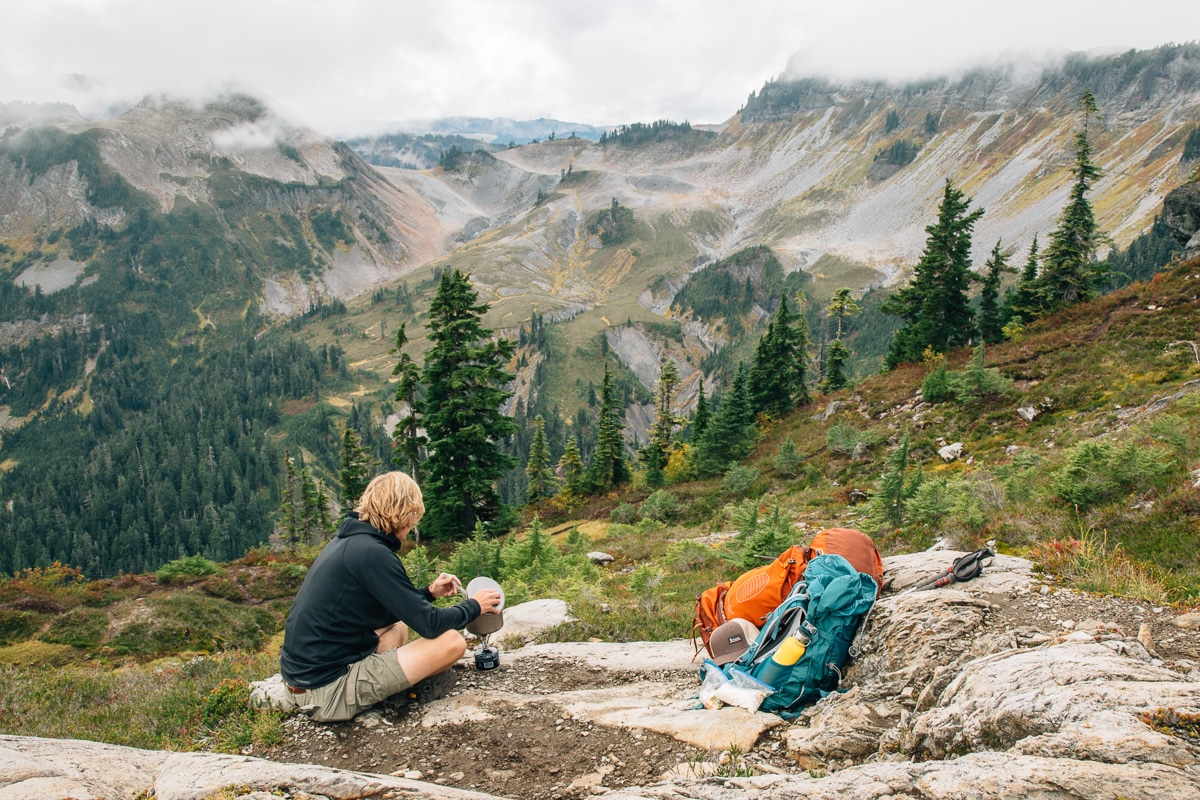


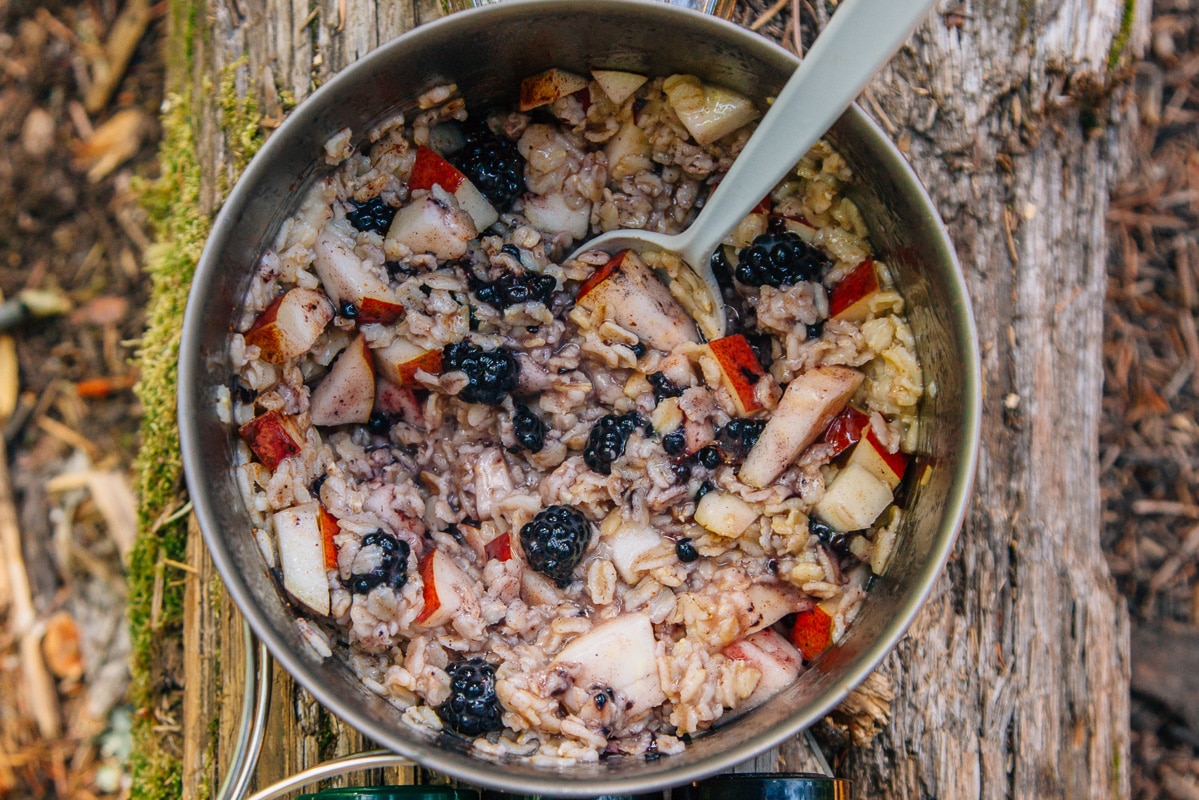
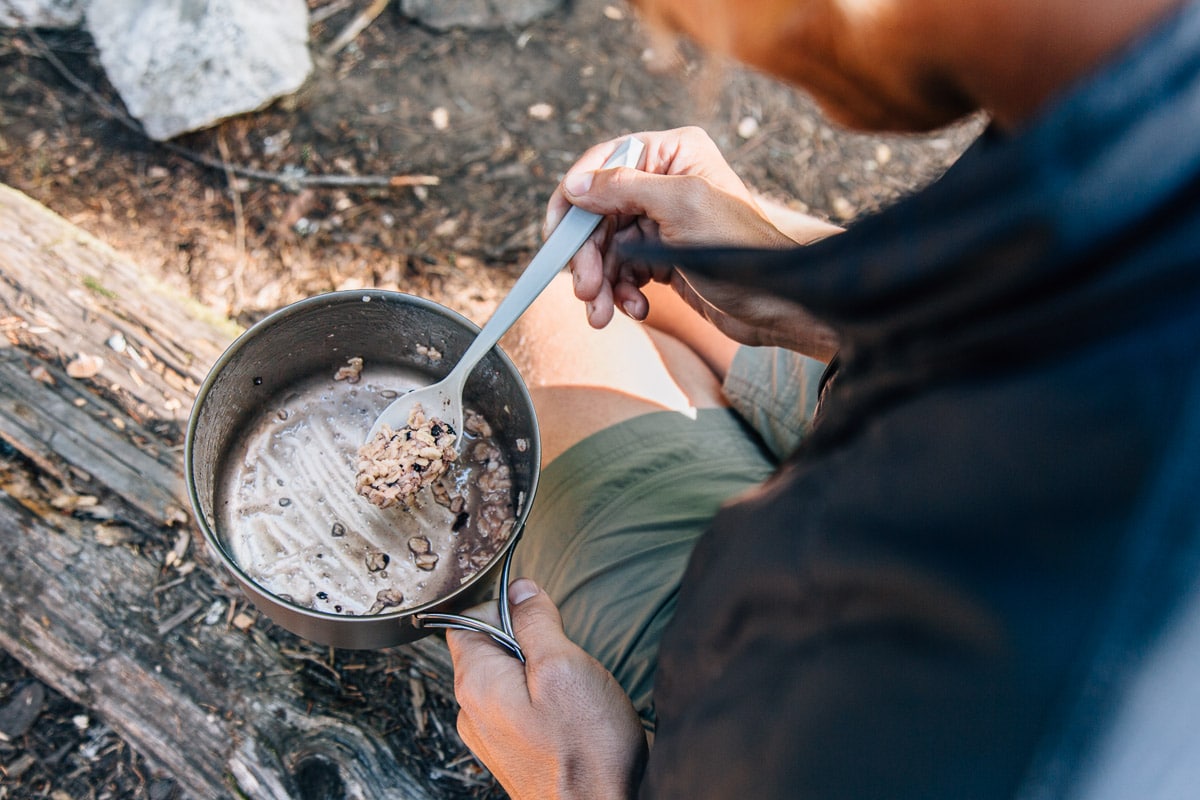

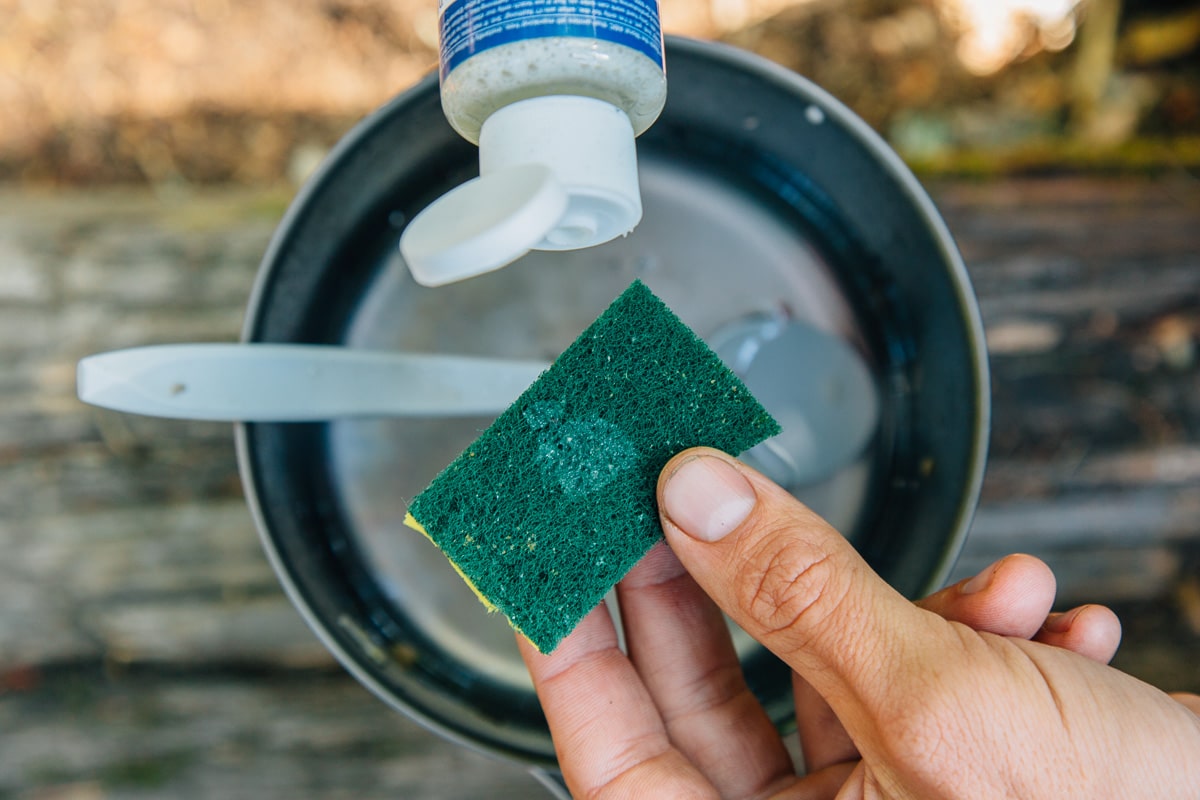
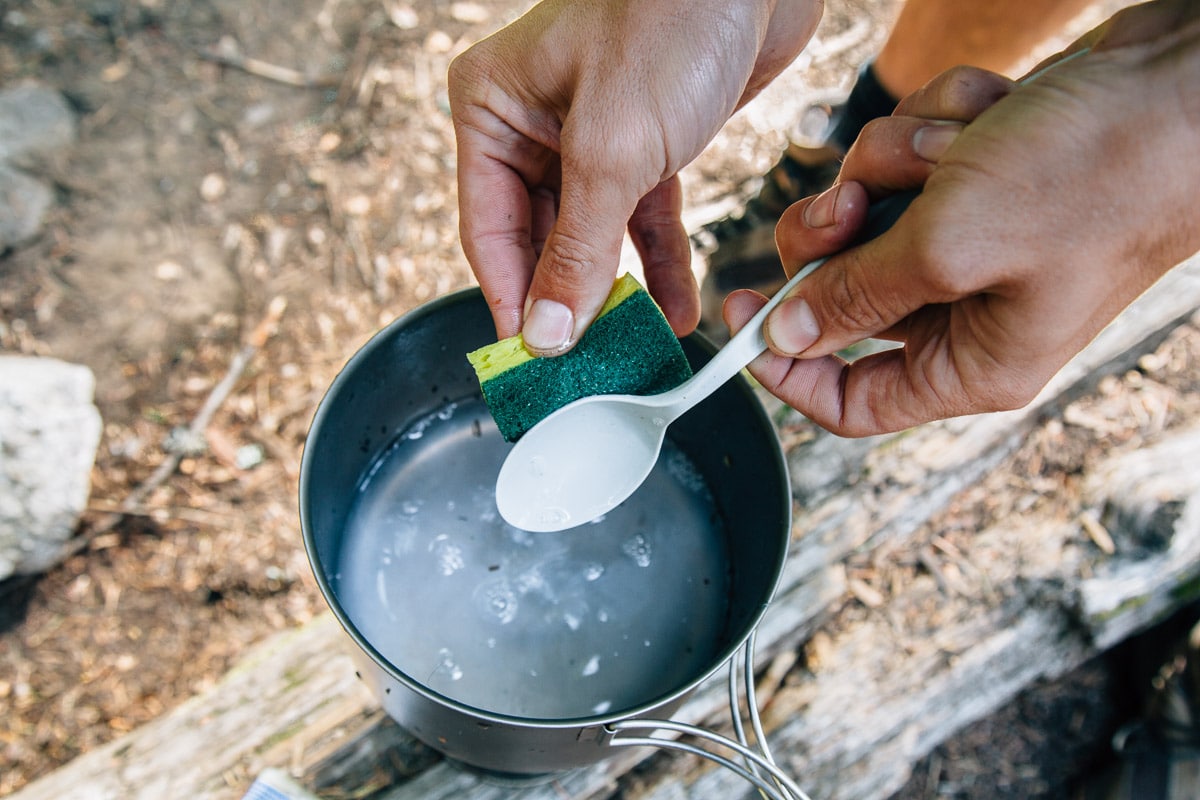
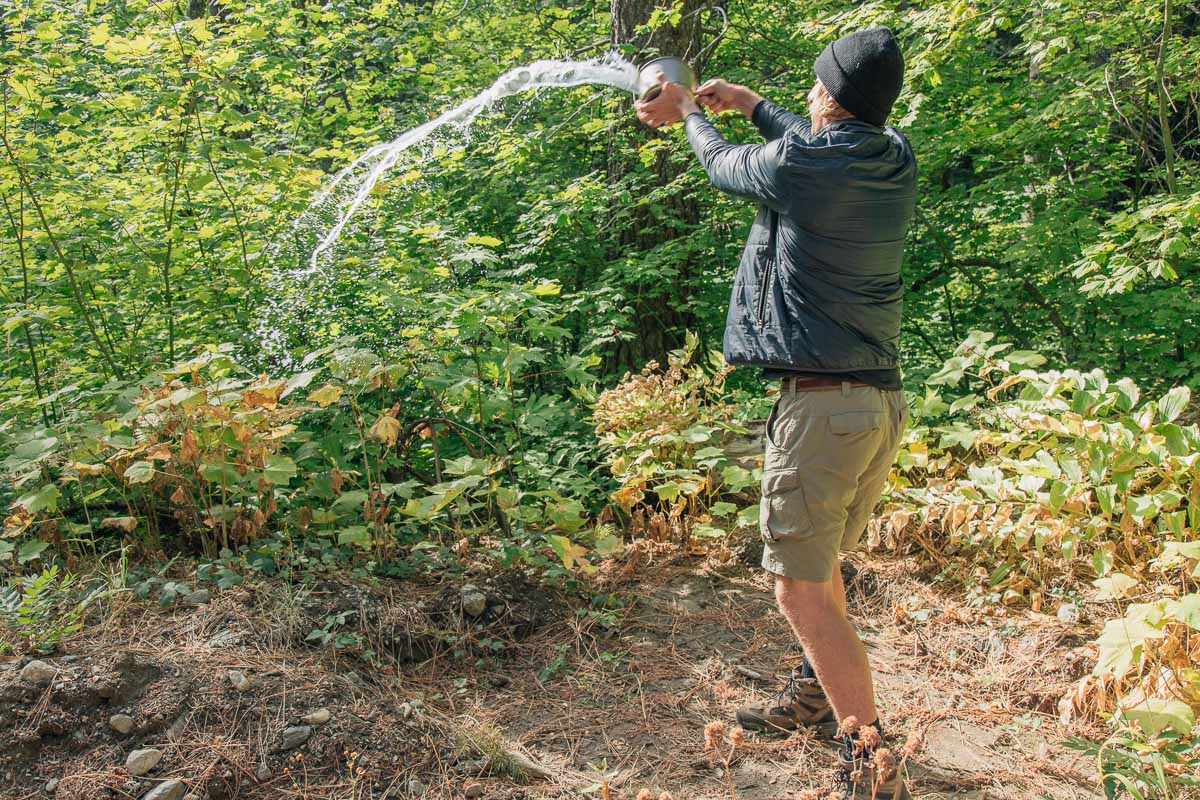
saw this cool on the heating kit it heats up my soups in a couple of mins I recommend you check it out, text “easyheat” to 22812 , make sure its one word but the info is a pretty interesting read, a good example of how we can cook off the grid.
I am very concerned about the Boy/cub scout practices if using zip lock bags to cook omelets and throwing the bags away. I am also concerned that the pack leaders are bringing single use plastics and creating a lot of trash instead of asking the boys and adults it bring mess kits. What ever happened to the Boy Scouts saying “leave no trace” the leaders are only doing what is the “easiest” for them not even thinking about their, footprint nor what they are teaching the boys!